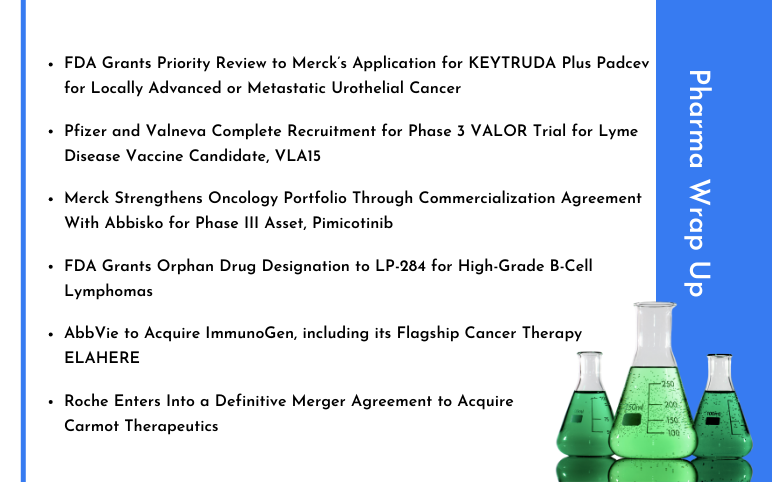More than 100 million people are living with one or the other form of Chronic Pain in the USA, says the Institute of Medicine. The available treatments to tackle cancer, as well as non-cancer pain, include nonsteroidal anti-inflammatory drugs (NSAIDs), acetaminophen, opioids, or combinations of opioids and non-narcotic analgesics, corticosteroids, antirheumatics/immunological agents, and anticonvulsants.
However, opioids are the benchmark treatment for Chronic pain. The present Chronic market offers majorly opioid-based therapies, thus, most of the patients rely on high doses of long-acting opioids that are prescribed for a long-term basis, which is a reason for the recent emergence of the opioid epidemic. Furthermore, the quality of the life of the patients remains poor, with many dissatisfied with the treatments they are receiving. Therapies often give rise to adverse side-effects besides a plausible risk of addiction.
Thus, there is a dire need for non-opioid based therapies. Companies such as Sorrento Therapeutics are developing a non-opioid-based toxin and distinctive neural intervention molecule, Resiniferatoxin (RTX; MCP-101). The drug directly interacts with afferent nerve cells without impacting any sensations such as touch, pressure, acute prickling pain, vibration sense or muscle coordination function in any way. It has received Orphan drug status for the treatment of intractable pain with end-stage cancer as well.
It is not news that the prevalence of Chronic pain is high in cancer patients, however, non-cancer patients suffering from different conditions also complain of Chronic pain. It has been observed that a large percentage of Chronic pain patients are experiencing pain is attributable to Osteoarthritis. It is a debilitating disease that results in excruciatingly painful joints due to damages in the cartilage between the joints.
To bridge the treatment gaps in the Osteoarthritis treatment market, Ampio Pharmaceuticals is evaluating Ampion, an investigational intra-articular injection. The drug works by decreasing the production of cytokines that causes inflammation (TNFα, IL-1β, IL-6, IL-12) due to pain, inflammation, and joint damage in osteoarthritis.
To minimize damage to the cartilage and improve drug retention in joints, Taiwan Liposome Company is investigating TLC599, which is a patented dexamethasone sodium phosphate (DSP) BioSeizer formulation intended to provide up to 24 weeks of continuous pain relief.
Available Osteoarthritis therapies are not that great in efficiency, and the presently marketed injectable medications do not provide long-term benefits. Thus, the pipeline therapies are bound to significantly provide relief from pain relief that too with the help of only a couple of intra-articular injections a year.
Besides, it is known that the Nerve growth factor (NGF) is a key mediator in peripheral pain. Based on this, Tanezumab seems promising enough to tackle Chronic pain associated with Osteoarthritis.
Tanezumab is an investigational monoclonal antibody in clinical trials by Pfizer and Eli Lilly. The therapy selectively targets, binds, and inhibits NGF whose levels rise as a consequence of injury, inflammation or chronic pain states. Tanezumab looks like a promising therapy as it works on a novel mechanism that acts in the periphery unlike opioids and other analgesics, including NSAIDs. It has received a Biologics License Application (BLA) for patients with chronic pain due to moderate-to-severe osteoarthritis (OA) who have experienced inadequate pain relief with other analgesics.
Other than Osteoarthritis, Back pain is one of the most commonly prevailing reasons for the degraded quality of life in Americans. It has been observed that more than 15 million of them are living with persistent back pain. Looking at the clinical scenario, a trio of pharma titans Regeneron, Teva, and Mitsubishi Tanabe Pharma are developing an investigational fully human IgG4κ monoclonal antibody targeting NGF factor in the Chronic Pain pipeline, Fasinumab (REGN475). It is in clinical trials for osteoarthritis pain and chronic low back pain.
Other than mAbs, the Chronic Pain pipeline also has small molecules as well as large ones under investigation. Atogepant is a small-molecule, calcitonin gene-related peptide (CGRP) receptor antagonist (Gepant) that is administered orally. A candidate of Allergan (acquired by AbbVie), it is in trials as a preventive treatment of migraine. Lorecivivint (SM04690) is another small-molecule inhibitor of the Wnt pathway, however, it is administered as an intra-articular injection. Samumed is evaluating the therapeutic agent as a potential disease-modifying drug for osteoarthritis (DMOAD).
Then there is Biogen developing its centrally and peripherally acting small molecule, Vixotrigine (BIIB074, formerly called CNV1014802). It is a voltage- and use-dependent sodium channel blocker. Whereas LY3016859 (Epiregulin/TGFα mAb) is a large molecule in clinical trials for Chronic pain by Eli Lilly. It is a recombinant a humanized monoclonal hIgG4 antibody that blocks the activity of two ligands for the epidermal growth factor receptor, transforming growth factor-α and epiregulin.
Centrexion Therapeutics is investigating its lead therapeutic agent CNTX-4975 for the treatment of moderate to severe pain of the osteoarthritis of the knee. It is an ultra-pure, synthetic form of trans-capsaicin injected directly into the site of pain; and has received the US FDA Fast Track Designation for the same.
Rexlemestrocel (aka Rexlemestrocel-L or MPC-06-ID) is in late-stage development for the treatment of chronic low back pain caused by disc degeneration (CLBP). The therapy is under development by Gruenthal and Mesoblast and is under trials for patients who fail to respond to available treatments besides invasive and costly surgical interventions.
However, in the past two decades, there has been a tremendous increase in the therapeutic options that are non-opioid in the Chronic pain market owing to the influx of several companies exploring the domain. DelveInisght estimates that the Chronic pain market size growth is anticipated to increase at a CAGR of 3.0% in the 7MM during the study period 2018–2030. Furthermore, the epidemiological analysis revealed that Chronic pain incidence, which was reported to be approximately 187,786,024 in 2020, is expected to further increase by 2030. It is another major driving force behind the humble growth that the Chronic pain market share is enjoying.
Key companies such as Pfizer, Regeneron/Teva Pharmaceuticals/Mitsubishi Tanabe Pharma Corporation, ABBVie, Stayble Therapeutics, Aptinyx, Lateral Pharma, Samumed, Sorrento Therapeutics, Ampio Pharmaceuticals, Semnur Pharmaceuticals, Braeburn Pharmaceuticals/Camurus, Taiwan Liposome Company, Centrexion Therapeutics, Biogen, Allodynic Therapeutics, Lexicon Pharmaceuticals, Gruenthal/Mesoblast, Eli Lilly and Company, Regenacy Pharmaceuticals, Algiax Pharmaceuticals, Bayer, Vertex Pharmaceuticals, Syntrix Biosystems, Neurofix Pharma, MiMedx, among others are proactively working to develop therapies that are effective for a longer duration, conveniently administered, and are associated with minimal side effects.
Conclusively, the emerging therapies, increasing incident cases, support from international organizations, better awareness, and the dynamic approach of pharmaceutical companies working in the domain are expected to propel the Chronic pain market size in the coming years.








-Agonist.png)


